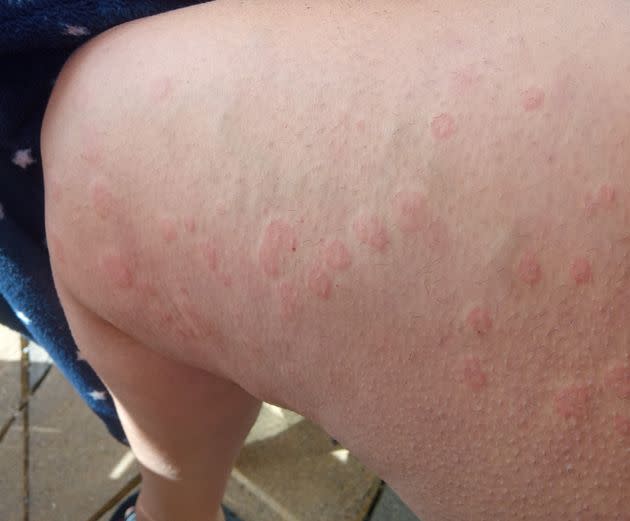Rashes Could Be 'Key Sign' Of Covid-19. Here's What They Look Like

We’re here to guide you through the coronavirus pandemic. Sign up to the Life newsletter for daily tips, advice, how-tos and escapism.
Rashes should be considered a “key diagnostic sign” of Covid-19, according to a study, which found 8% of people who test positive for the virus have some form of rash.
A team of researchers from the Covid Symptom Study surveyed 12,000 people who had skin rashes, as well as suspected or confirmed Covid-19. They asked for images of rashes from survey respondents, especially people of colour, who are currently under-represented in dermatology resources.
In some cases the rash can occur on its own, the study found, without any other symptoms of the virus such as a continuous cough, fever, or loss of smell. Almost one in five (17%) who had tested positive for coronavirus reported a rash as the first symptom of the disease. Among those who reported a rash – and were confirmed as having coronavirus – 21% said it was their only symptom.
Currently, the NHS only lists three symptoms of coronavirus. These are: a high temperature, new and continuous cough, and a loss or change to your sense of smell or taste. Rashes aren’t widely considered to be a symptom of the virus.
We asked researchers from the Covid Symptom Study to share photos of the rashes that have regularly showed up in coronavirus patients.
Related...
Key rashes to look out for
There are three main types of rash the researchers found showed up in patients.
The first is a hive-type rash (also referred to as urticaria), where raised bumps can suddenly appear on the skin – these can come and go quite quickly over hours and can be very itchy. Think: nettle rash.


Urticaria rashes can appear quite early on in the infection, but also last a long time, said researchers.
It often starts with intense itching on the palm of...

 Yahoo Lifestyle
Yahoo Lifestyle 

